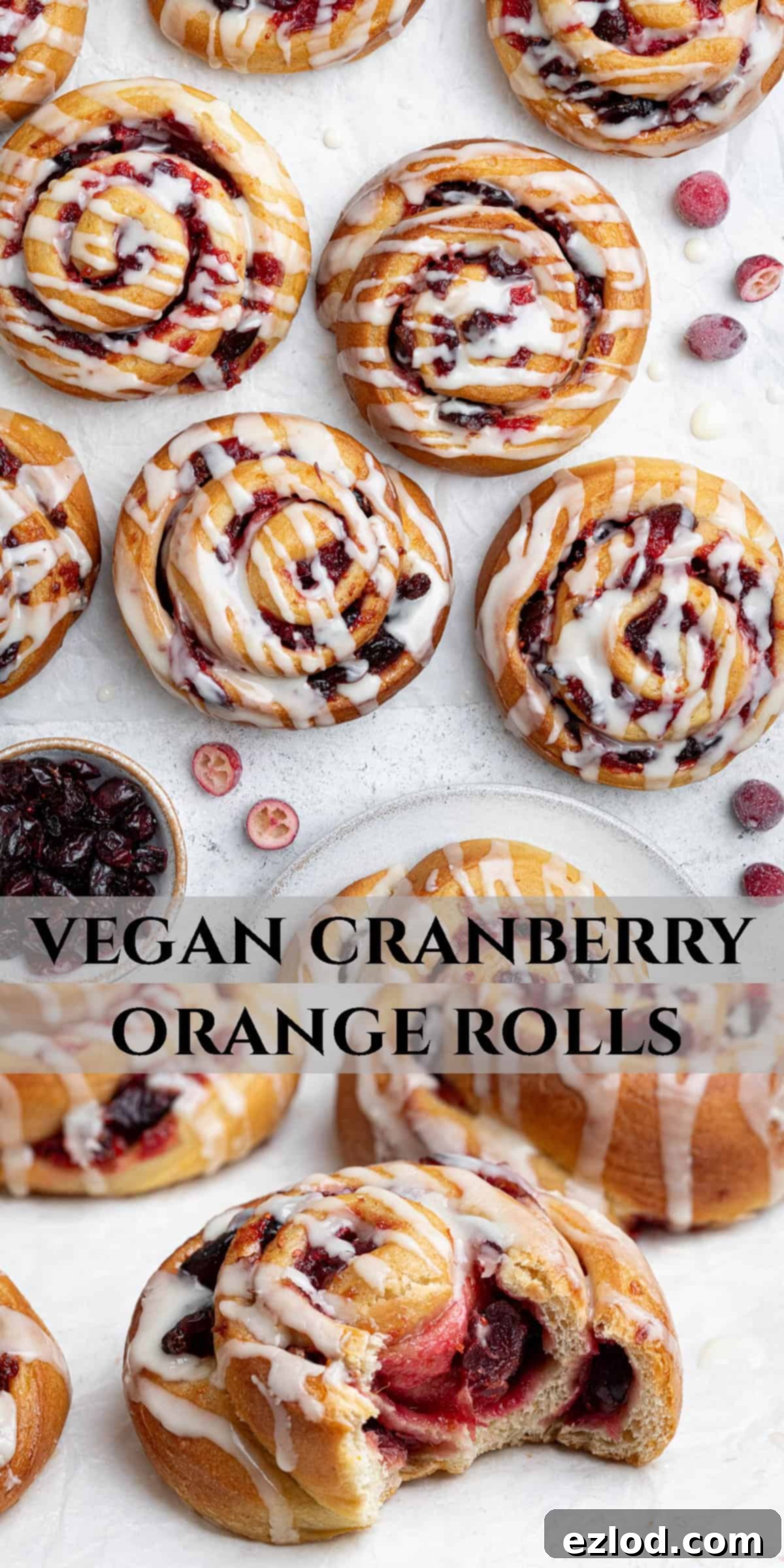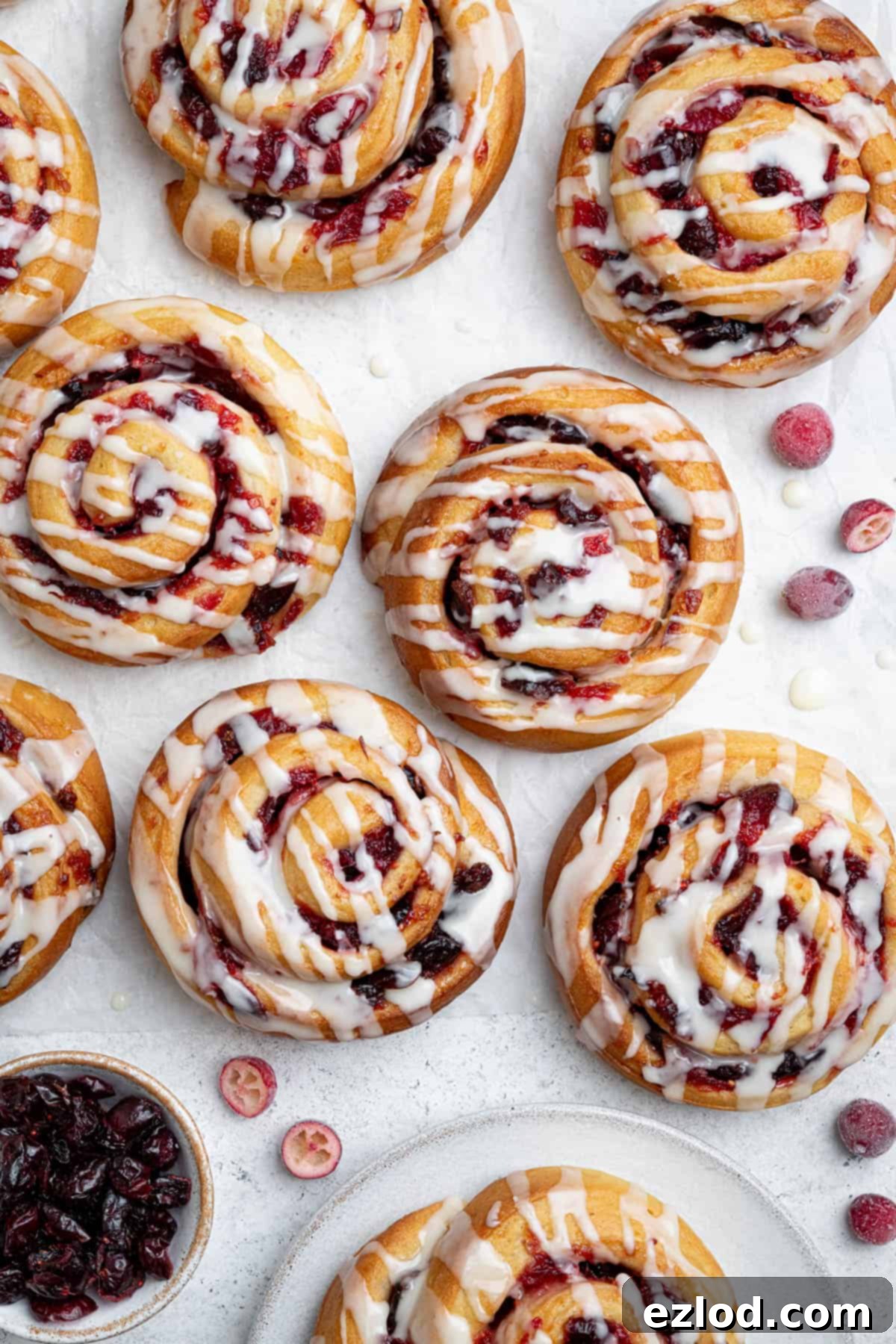Irresistible Vegan Cranberry Orange Rolls: Soft, Sticky & Perfect for Festive Indulgence
Prepare to fall in love with these incredibly soft, sticky, and utterly delightful vegan cranberry orange rolls. Infused with bright orange zest and generously filled with a tangy, jammy cranberry mixture, these plant-based bread rolls are a true culinary treat. They are designed to be a show-stopping festive breakfast or brunch centerpiece, but also make a fantastic pick-me-up any time of day, perfectly paired with a warm cup of coffee or tea.
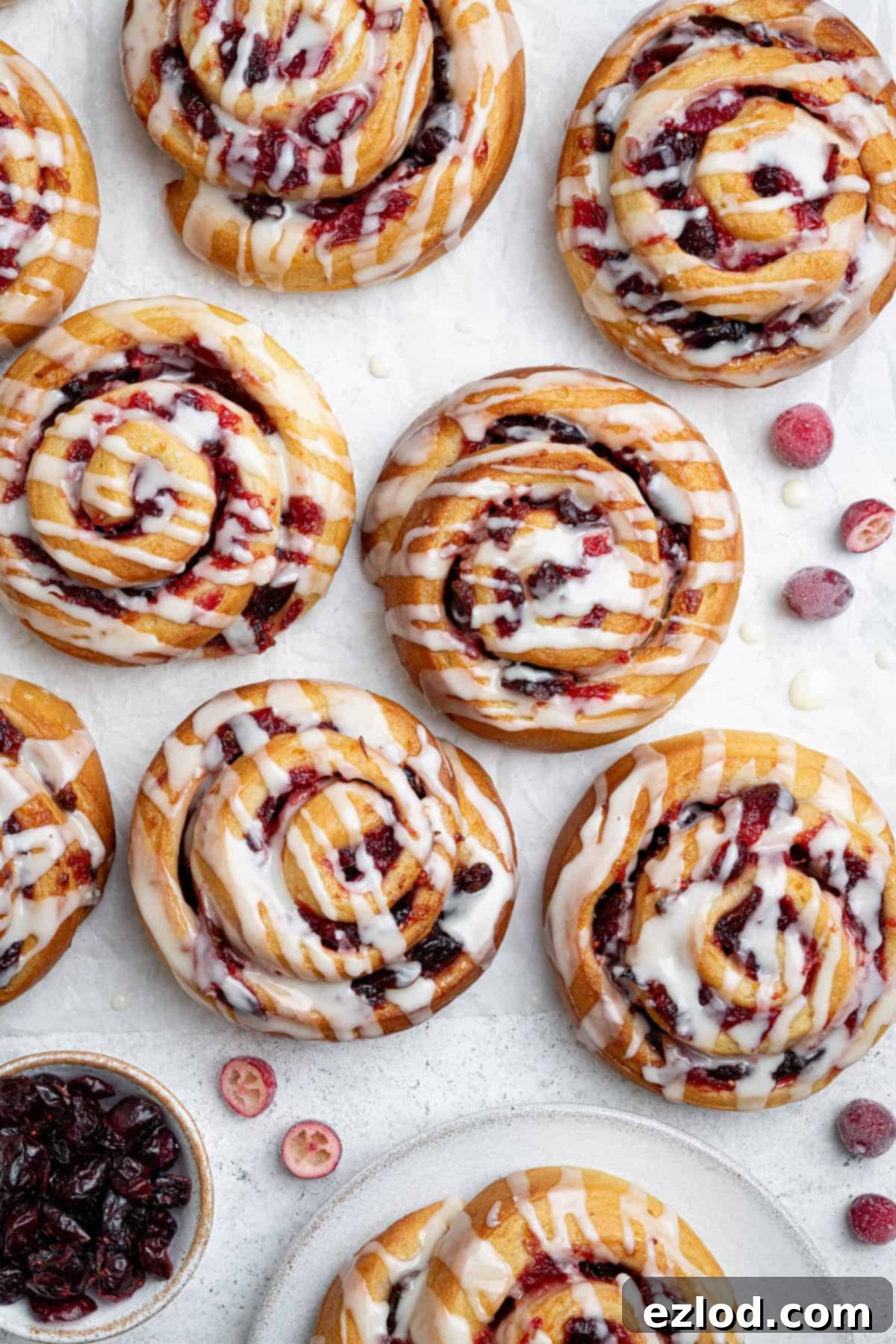
These vegan cranberry orange rolls stand out with their beautifully soft, tender, and sticky texture. They are rich in flavor but strike a perfect balance, never being overly sweet, making them incredibly moreish! The secret to their extra soft and squishy interior lies in the innovative Tangzhong method, a Japanese technique that pre-cooks a portion of the flour and liquid to create a roux, resulting in a bread that’s exceptionally moist, tender, and stays fresh for longer.
They offer a wonderful, vibrant alternative to traditional cinnamon rolls, especially during the holiday season for Christmas or Thanksgiving gatherings. Their colorful, jammy filling and glistening orange glaze make them visually stunning and incredibly inviting. Every bite promises a harmonious blend of light, fluffy dough, complemented by the tartness of the cranberries and the sweet, aromatic notes of orange. The rich dough, combined with the just-sweet-enough filling and bright orange glaze, creates an unforgettable taste experience.
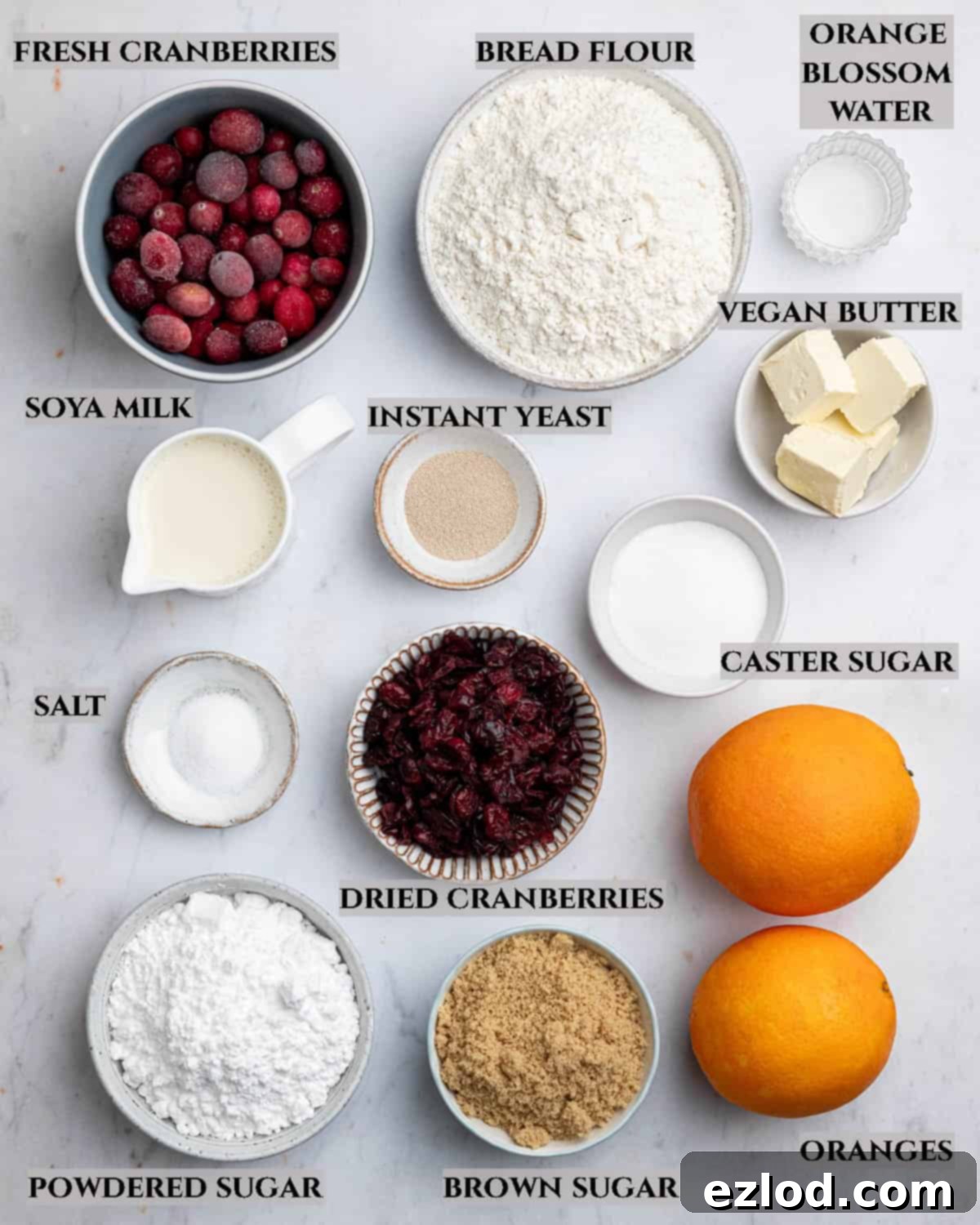
Ingredient Spotlight: Understanding Your Components
Crafting the perfect vegan cranberry orange rolls starts with understanding each ingredient’s role. Here’s a detailed look at what you’ll need and why:
Cranberries: For a truly dynamic filling, you’ll need a combination of both fresh or frozen cranberries and dried cranberries. The fresh/frozen berries burst with bright, tangy flavor and natural pectin, contributing to the jammy texture. If using frozen, there’s no need to defrost them; simply add them straight from the freezer to the pan. Dried cranberries, on the other hand, offer concentrated sweetness and chewiness, adding another layer of texture and depth to the filling.
Orange: The vibrant flavor profile of these rolls heavily relies on fresh orange. You’ll need both orange zest for its aromatic oils and intense flavor, and orange juice for acidity and moisture in both the dough and the filling. For an extra layer of floral notes, I often add a touch of orange blossom water. However, if you prefer a more classic aroma, you can easily substitute it with vanilla extract or orange extract.
Bread Flour: The choice of flour is crucial for achieving the desired texture. White bread flour is highly recommended because of its higher protein content, which leads to stronger gluten development. This results in the wonderfully soft, fluffy, yet chewy texture that makes these rolls so satisfying. While plain (all-purpose) flour can be used, it contains less protein, so the resulting texture won’t be quite as elastic or airy. I strongly advise against using wholemeal (whole wheat) flour, as its higher bran content will inhibit gluten formation, making the buns too dense and heavy.
Instant Yeast: My preference for bread making is always instant yeast. Its convenience is unmatched; it can be added directly to the dry ingredients without needing to be activated in warm liquid first. This streamlines the process and ensures a reliable rise. Just ensure your yeast is fresh and not expired for optimal results.
Salt: Often overlooked, salt is an absolutely essential ingredient in bread making. It does far more than just add flavor; it strengthens the gluten structure, controls the yeast’s activity, and enhances the overall taste profile. Omitting salt will result in bland, underdeveloped bread.
Non-Dairy Milk: For baking, my go-to is always soy milk. It boasts the highest protein content among common non-dairy milks, making its behavior in baking most similar to dairy milk. This contributes to better structure and browning. However, most unsweetened varieties of non-dairy milk (almond, oat, cashew) will work. If you have soy milk, use it for the best possible results.
Vegan Butter: For the best structure and richness in your dough and filling, please use a block variety of vegan butter. These are specifically formulated to have a firmer consistency, similar to dairy butter, and perform much better in baking than spreadable margarines. Brands like Flora plant butter or Naturli vegan block are excellent choices for their texture and flavor.
Sugar: A combination of sugars is used to create the perfect balance. Caster sugar (superfine granulated sugar) is used in the dough for its fine texture and ability to dissolve easily, contributing to a tender crumb. For the filling, light brown soft sugar is chosen for its molasses notes, which complement the cranberries beautifully and add a deeper, richer sweetness. You can swap the caster sugar for light brown or granulated sugar in the dough if preferred, without significantly altering the outcome.
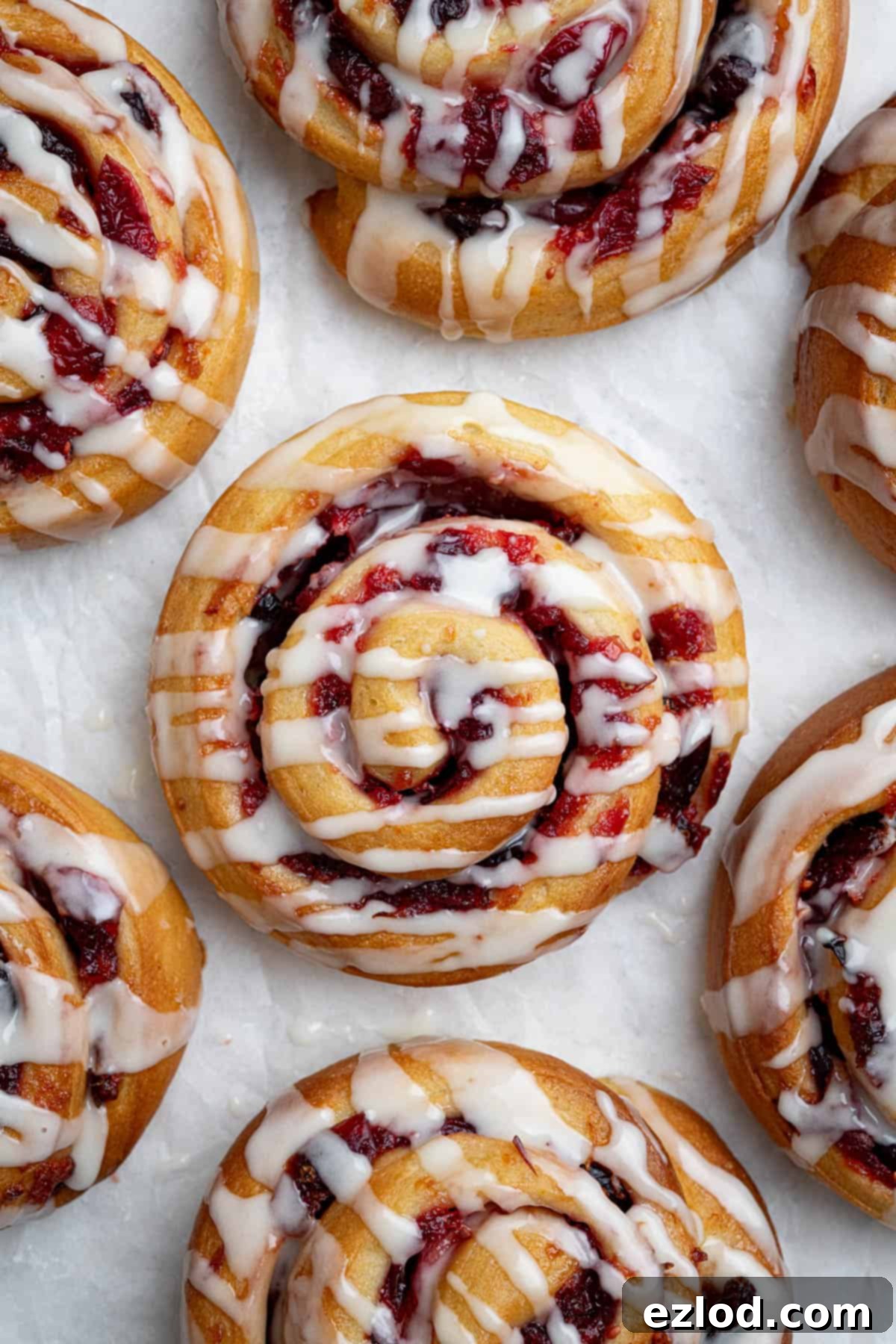
How To Make Vegan Cranberry Orange Rolls: A Step-by-Step Guide
(For complete measurements and detailed instructions, please refer to the recipe card at the bottom of this page.)
Step 1: Prepare the Tangzhong. Begin by placing the specified amount of bread flour in a small saucepan. Gradually whisk in the non-dairy milk until a smooth, lump-free slurry forms. This gradual addition helps prevent clumps. Place the pan over a medium-low heat, continuing to whisk constantly. The mixture will slowly thicken and transform into a paste or pudding-like consistency. This process takes just a few minutes but is vital for the rolls’ texture.
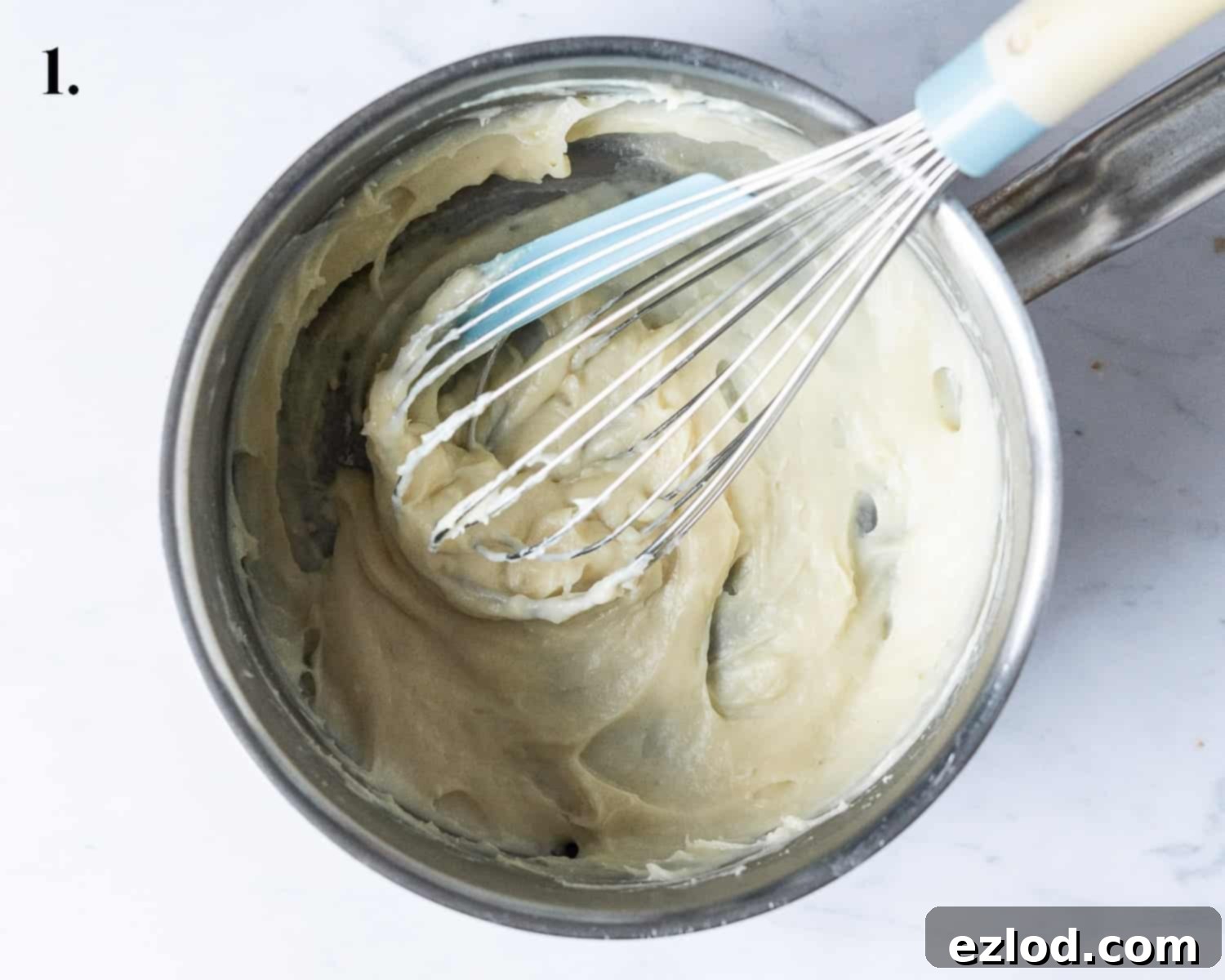
Step 2: Combine Dough Ingredients. Scrape the warm tangzhong into the bowl of your stand mixer, fitted with a dough hook attachment. Immediately pour the cold non-dairy milk and orange juice over the tangzhong. The cold liquid helps to cool down the tangzhong, preventing it from being too hot for the yeast. Next, add the orange zest, orange blossom water (or chosen extract), sugar, salt, bread flour, and finally, the instant yeast. Stir the ingredients together on a low speed until a shaggy, rough dough forms. Increase the stand mixer speed to medium and continue mixing for about 10 minutes until the dough becomes smooth, elastic, and visibly stretchy. This extensive kneading develops the crucial gluten network.
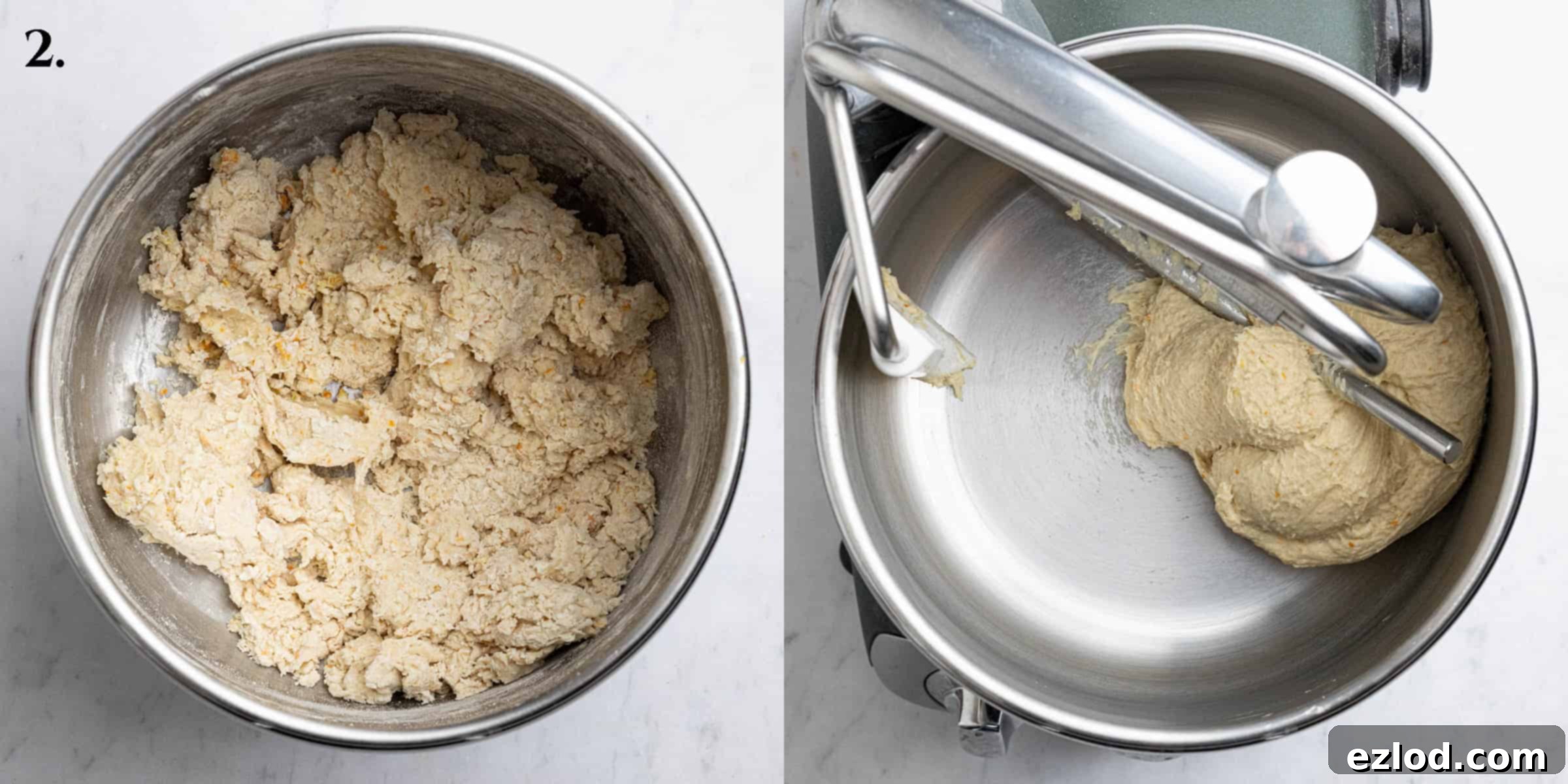
Step 3: Incorporate Vegan Butter. With the mixer still running, gradually add the softened vegan block butter, piece by piece. Continue kneading for approximately another 5 minutes after all the butter has been added. The dough will transform, becoming smooth, elastic, and slightly sticky, but no longer greasy. A good way to check for proper gluten development is the windowpane test: take a small piece of dough and gently stretch it with your fingers. If you can stretch it thin enough to see light through it without it tearing, your dough is perfectly kneaded.
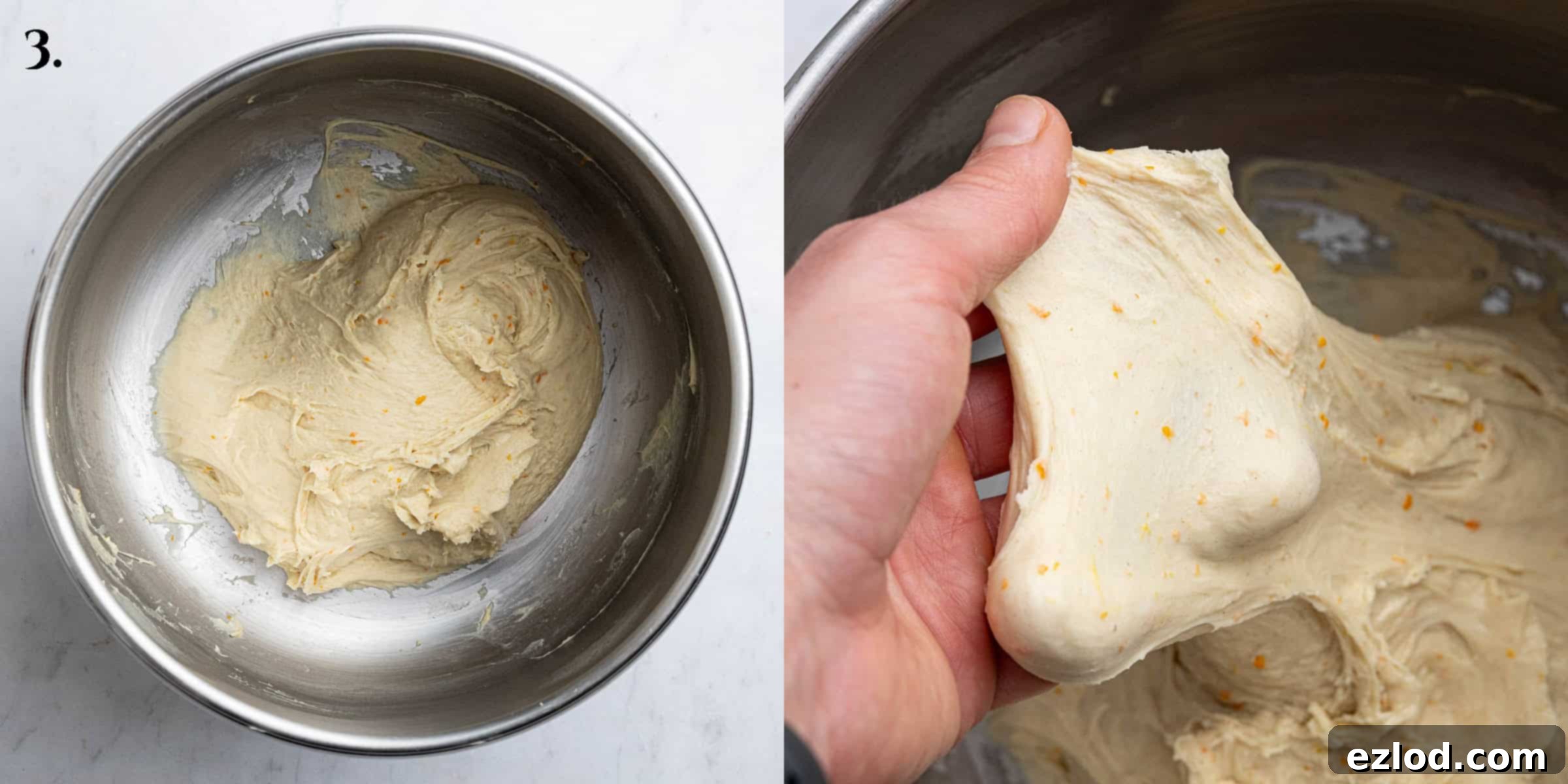
Step 4: First Rise (Bulk Fermentation). Lightly grease a clean bowl with a little oil. Transfer the kneaded dough into this bowl, turning it once to coat lightly. Cover the bowl loosely with plastic wrap or a damp tea towel. Place it in a warm, draft-free spot to rise for 1-2 hours, or until the dough has doubled in size. The exact timing will depend on the ambient temperature.
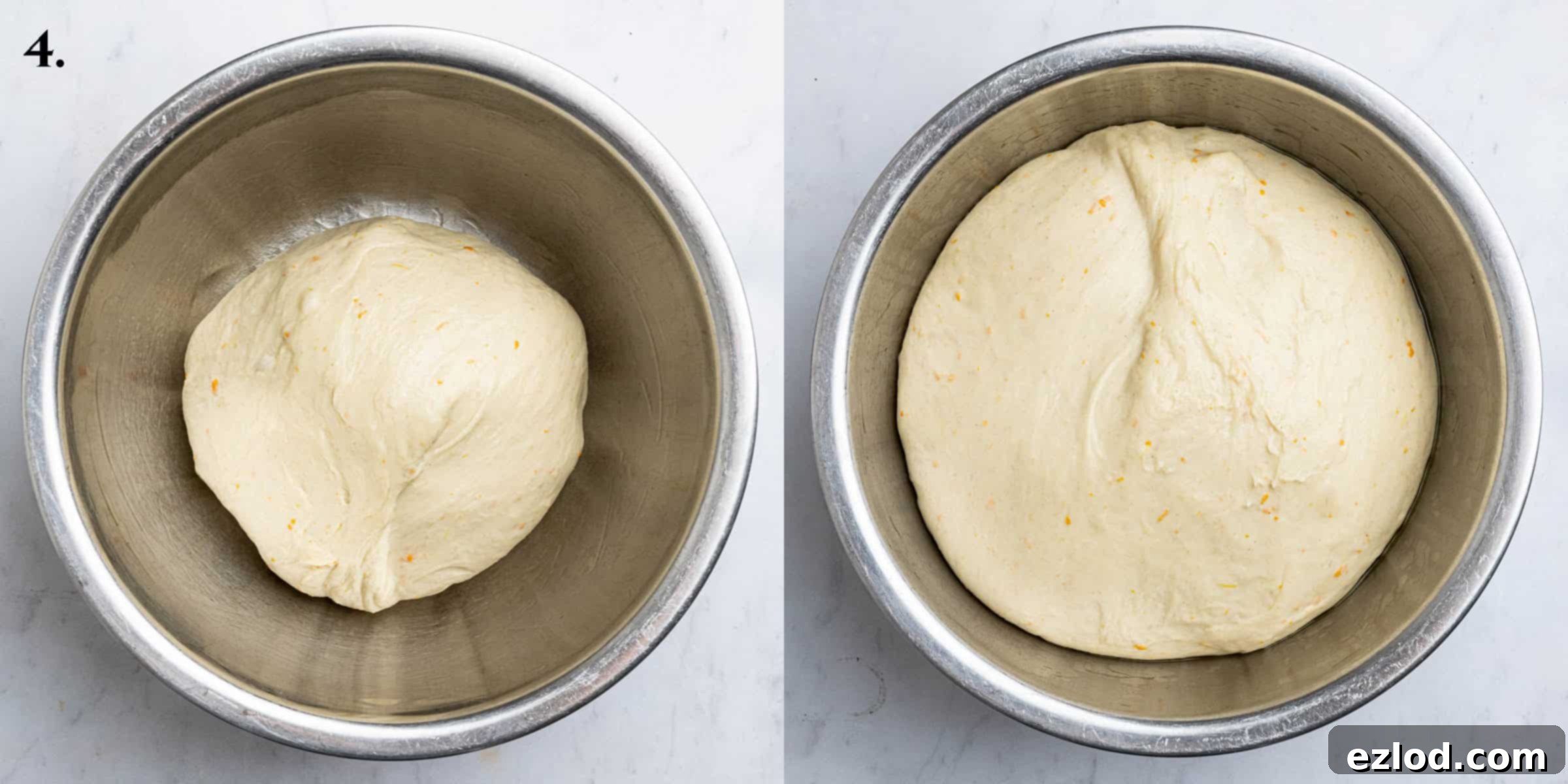
Step 5: Prepare the Cranberry Filling. While the dough is rising, you can make the delicious cranberry filling. In a saucepan, combine the orange zest, orange juice, light brown soft sugar, fresh/frozen cranberries, dried cranberries, and a pinch of salt. Bring the mixture to a gentle simmer over medium heat. Cook for about 10 minutes, stirring frequently, until the cranberries have burst, and the mixture has thickened to a rich, jammy consistency. Remove the pan from the heat and stir in the vegan block butter until melted and fully incorporated. Set the filling aside to cool completely. Once cool, it can be refrigerated until ready to use.
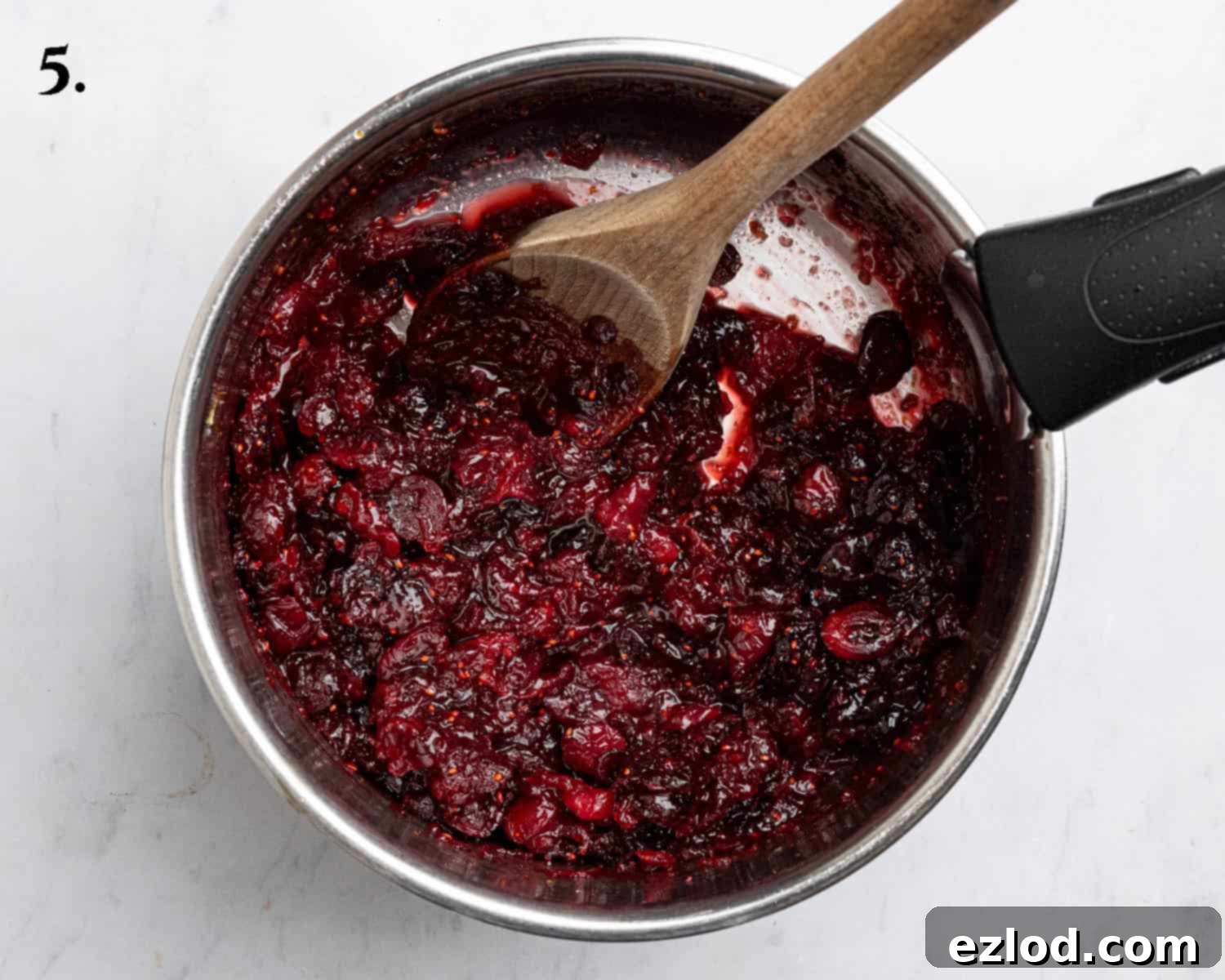
Step 6: Shape the Rolls. Once the dough has completed its first rise, gently punch it down to release the air. Transfer the dough to a lightly floured surface. Using a rolling pin, roll the dough out into a large rectangle, approximately 40 x 32 cm (16 x 12 inches). Spread the completely cooled cranberry filling evenly over the entire surface of the rolled-out dough, leaving a small border along one long edge.
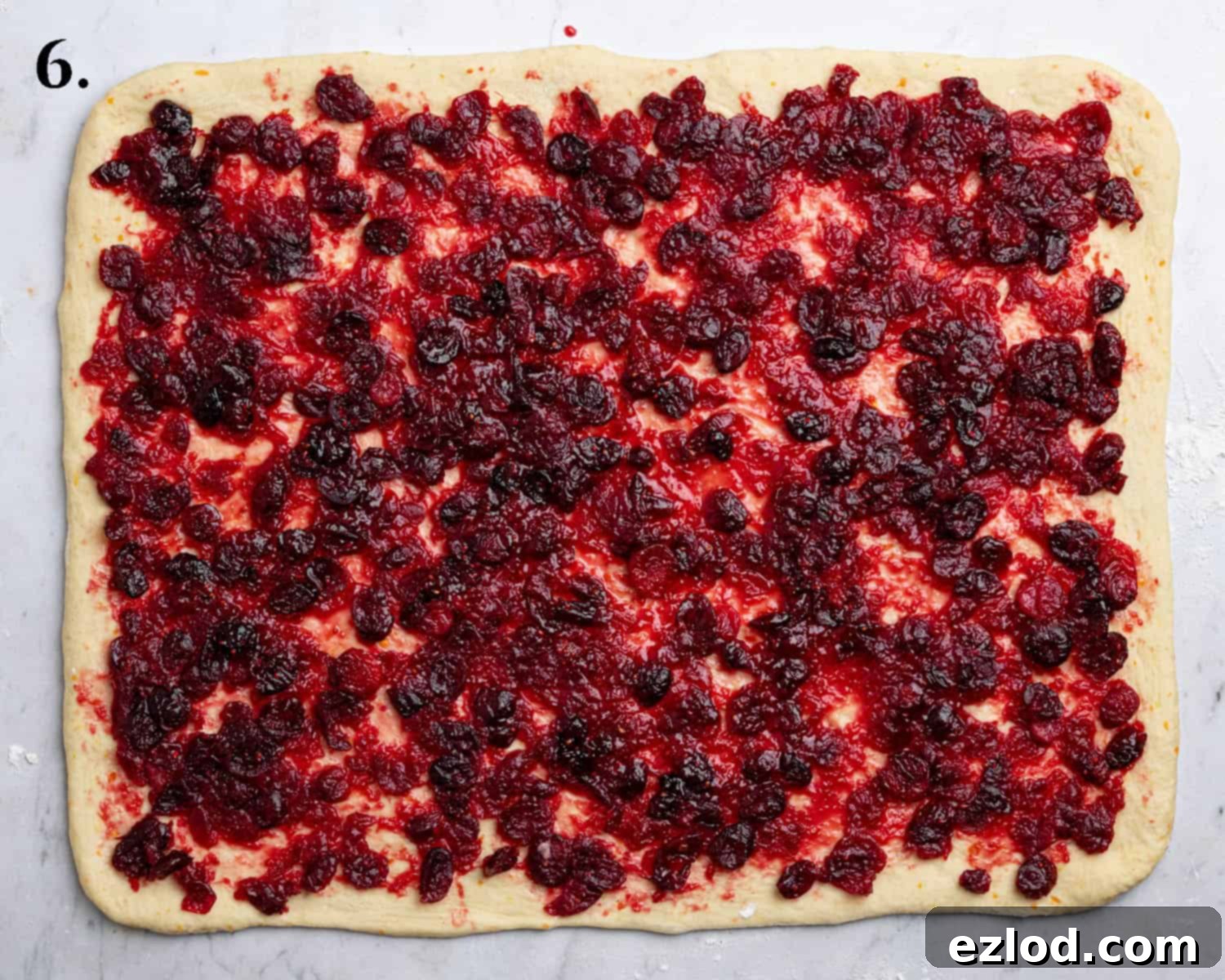
Step 7: Slice and Spiral. To neaten the rolls, you may wish to trim off the short ends of the dough rectangle (this is optional but makes for prettier rolls). Then, using a pizza roller or a sharp knife, slice the dough crosswise into 10 equal strips. Carefully and gently roll each strip up into a spiral, starting from one of the cut ends. It’s important not to roll them too tightly, as this can make the baked rolls dense.
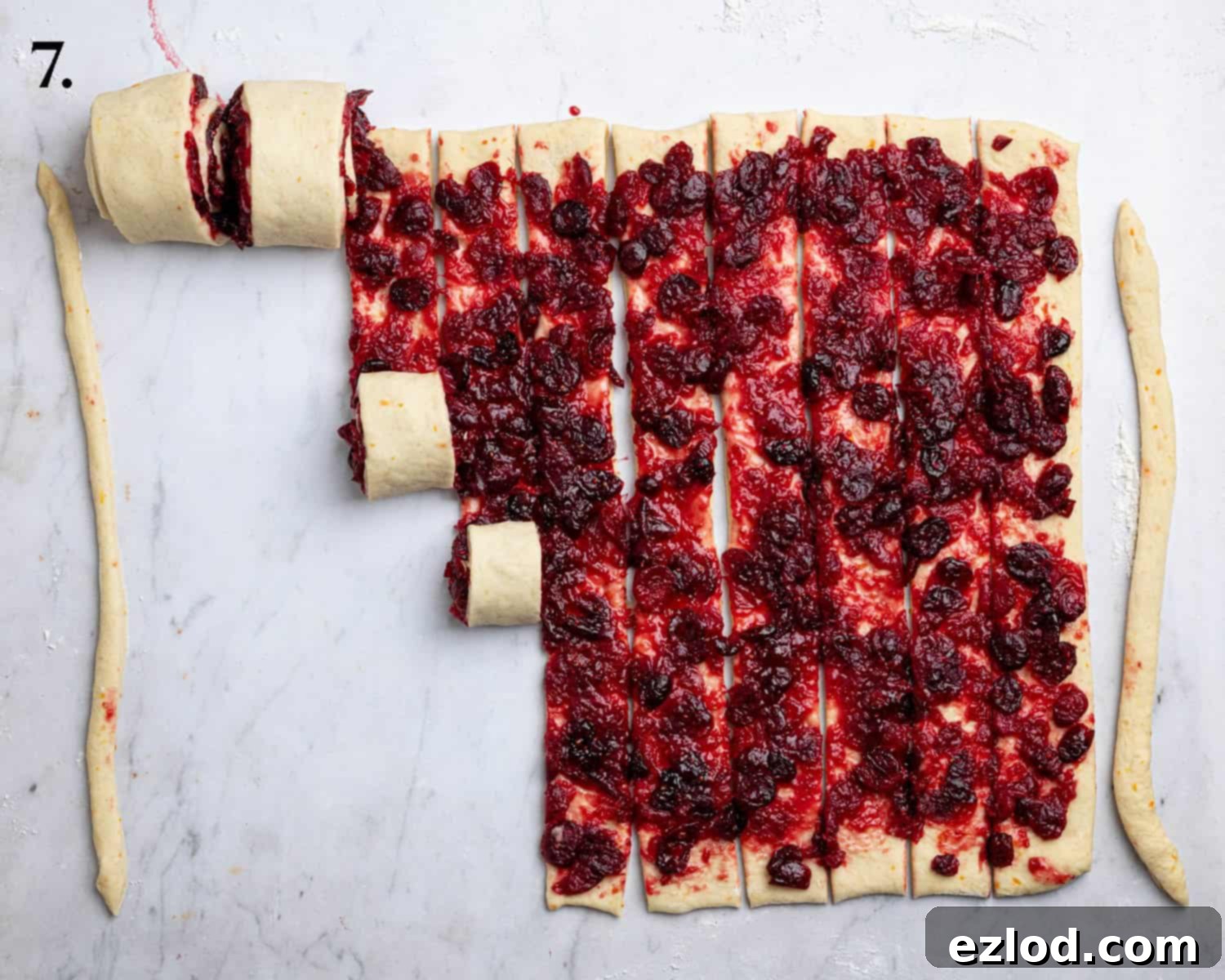
Step 8: Second Rise (Proofing). Tuck the loose ends of each spiral neatly underneath the roll to secure them. Arrange the rolls, spaced slightly apart, on one or two baking sheets lined with baking parchment. Loosely cover the rolls with lightly oiled plastic wrap or a damp cloth to prevent drying. Allow them to rise again in a warm spot for about 45 minutes, or until they look visibly puffy and soft. A good test for proofing is to gently press a finger into the dough; it should spring back slowly, leaving a slight indentation. If it springs back quickly, it needs more time.
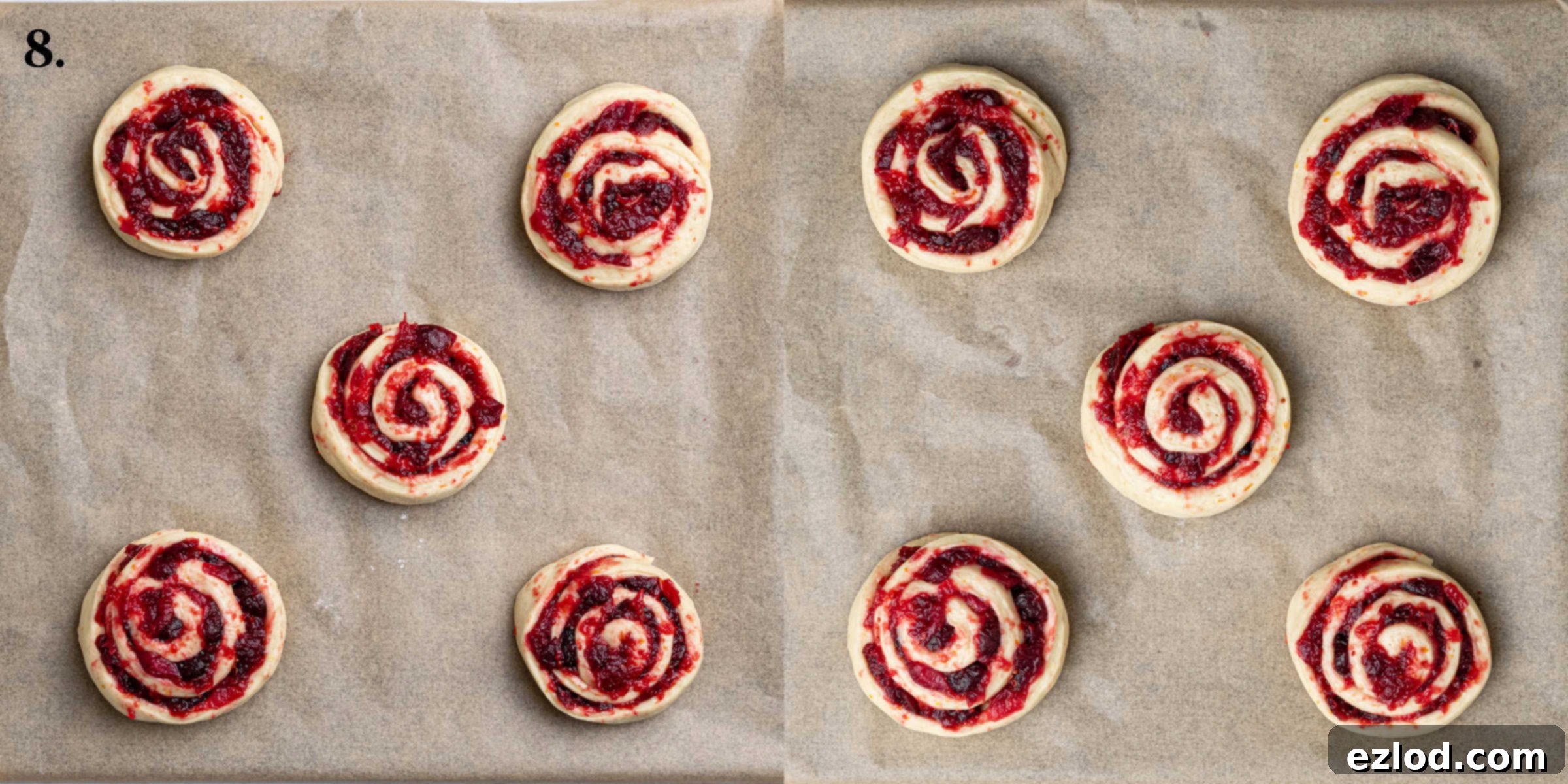
Step 9: Bake to Golden Perfection. While the rolls are proofing for their second rise, preheat your oven to 180°C/160℃ fan/350°F/gas mark 4. Just before baking, gently brush the exposed dough parts of the rolls with a little non-dairy milk. This helps achieve a beautiful golden crust. Bake for approximately 25 minutes, or until the rolls are deep golden brown and cooked through. An internal temperature of at least 90°C/194°F indicates they are fully baked. Once out of the oven, let them cool on the baking sheets for 10 minutes before transferring them to a wire rack to cool completely. Once cooled, store them in an airtight container.
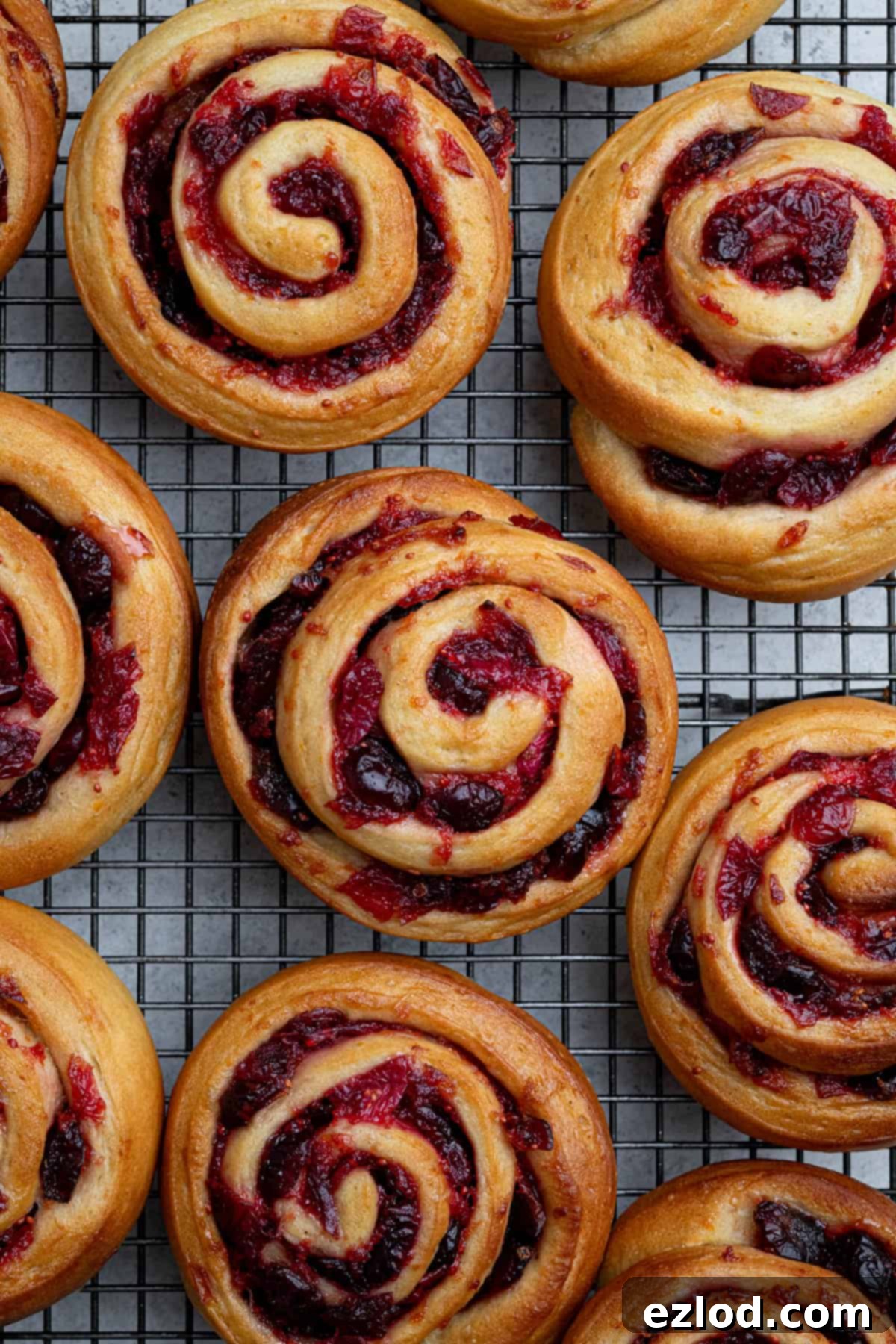
Expert Tips for Perfect Vegan Cranberry Orange Rolls:
Achieving bakery-quality vegan rolls is simple with these helpful tips:
- Precision in Measuring: As with all my baking recipes, I wholeheartedly recommend using metric measurements with a digital kitchen scale rather than cup conversions. Volume measurements (cups) are notoriously inaccurate and can lead to inconsistent results. A scale ensures precision, better consistency, and often, less mess!
- Yeast Vitality: Always double-check that your instant yeast isn’t out of date. Expired yeast will lose its leavening power, resulting in dough that fails to rise properly, or at all. You can test your yeast by dissolving a teaspoon of it with a pinch of sugar in 1/4 cup of warm (not hot!) water. If it doesn’t foam within 5-10 minutes, it’s likely dead and should be replaced.
- Temperature Matters for Rising: The time it takes for your dough to rise (proof) is highly dependent on the ambient temperature. In a warm environment, the dough will rise much faster than on a cold day. If your kitchen is cool, you can create a warm spot by turning on your oven to its lowest setting for a few minutes, then turning it off and placing the dough inside (with the door ajar). Alternatively, a proofing box or placing the bowl near a sunny window or warm appliance can help.
- Resist Adding Extra Flour: It’s crucial not to be tempted to add more flour to the dough, unless it’s genuinely wet and soupy rather than just sticky. This dough is designed to be a bit soft and sticky; this characteristic contributes to the light and fluffy end product. Adding too much flour will make the dough stiff, leading to dry, dense buns instead of the desired airy texture.
- Overnight Rise for Enhanced Flavor: If you have time and want to break up the workload, consider giving the dough its first rise overnight in the refrigerator. The cold, slow fermentation develops a deeper, more complex flavor in the bread and can result in an even softer crumb. Just be sure to bring the dough to room temperature before shaping.
- Baking Arrangement: While this recipe calls for baking the rolls spaced apart, you can also bake them next to each other, “cinnamon roll style,” in a 23 x 33 cm (9 x 13 inch) baking tin. If baking them touching, they may take a little longer to cook through, typically about 35 minutes, as they will steam each other slightly. This method yields an extra soft side on each roll!
- Yield Flexibility: This recipe is designed to produce 10 medium-sized rolls. However, feel free to adjust the size to your preference: you can make 12 smaller rolls for sharing, or 8-9 giant ones for a truly indulgent treat.
- Serving Freshness: These vegan cranberry orange rolls are absolutely at their best when eaten on the day they are baked. The flavors are most vibrant, and the texture is perfectly soft and sticky. They will, however, remain delicious for a couple more days, especially if you warm them slightly in the microwave or a low oven before serving to refresh their softness.
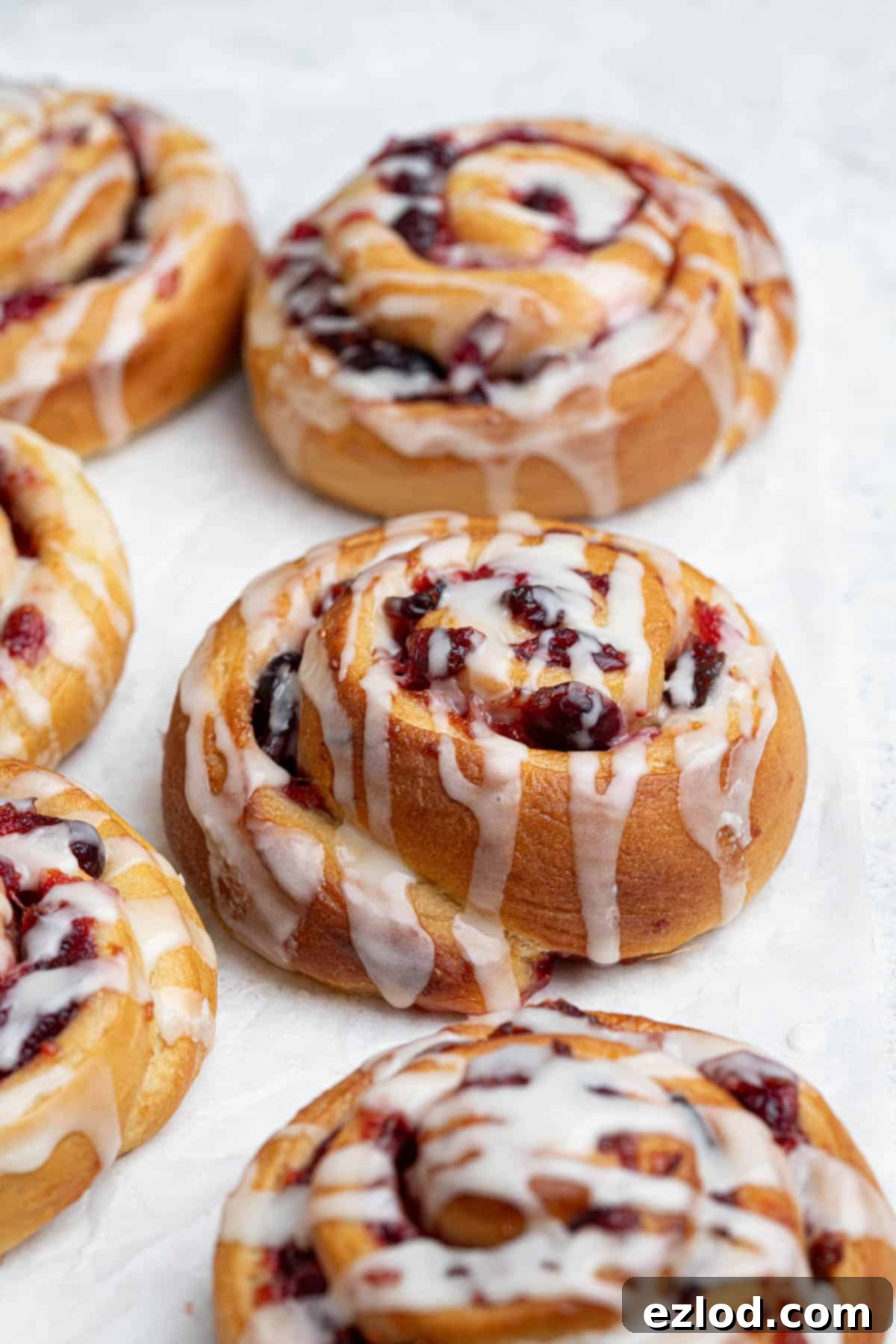
Frequently Asked Questions (FAQ’s):
To maintain their freshness and delightful texture, store the baked rolls in an airtight container at cool room temperature for up to 2 days. For the best experience, I highly recommend warming them gently in a microwave for 10-20 seconds or in a low oven (around 150°C/300°F) for 5-10 minutes before serving. This revives their soft, tender quality.
While this is a very soft and sticky dough, making it easiest to handle in a stand mixer, you absolutely can knead it by hand if you don’t have one. Just be prepared for a bit of a workout and a potentially sticky experience! When kneading by hand, avoid flouring your work surface excessively, as this will incorporate too much extra flour into the dough, making it dry and dense. Instead, if the dough is sticking too much, lightly oil your work surface and your hands with a neutral oil. A bench scraper is an incredibly useful tool for hand-kneading, allowing you to easily unstick the dough from the surface and fold it over itself effectively.
Yes, these baked cranberry orange rolls freeze beautifully! Once they have cooled completely after baking, you can freeze them. For optimal freshness, it’s best to freeze them on the same day they are baked. To prevent freezer burn, store them in an airtight freezer-safe container or wrap them individually in plastic wrap, then place them in a freezer bag. When you’re ready to enjoy them, allow them to defrost at room temperature for a few hours. Then, refresh them by warming them in a low oven (150°C/300°F) for 5-10 minutes, or a microwave for 10-20 seconds. I do not recommend freezing the rolls unbaked, as the yeast activity can be unpredictable after thawing.
Unfortunately, this recipe is not suitable for a simple gluten-free flour substitution. Gluten-free bread making is a complex science, and the entire recipe would need significant re-working to achieve a comparable texture and rise. Gluten-free baking is not my area of expertise, so I cannot provide specific advice for adapting this recipe. For successful gluten-free results, it is always best to use a recipe that has been specifically developed and tested for gluten-free ingredients rather than attempting to adapt a traditional wheat-based recipe.
Explore More Festive Vegan Breads:
- Vegan Stollen Bars
- Vegan St. Lucia Buns (Lussekatter)
- Orange and Anise Snowflake Bread
- Vegan Banana Monkey Bread
- Vegan Garlic Dough Balls
- Vegan Stollen Wreath
- Gingerbread Cinnamon Rolls

If you tried this delightful recipe, I’d love to hear from you! Please rate it, leave a comment below, or tag @domestic_gothess on Instagram and use the hashtag #domesticgothess. Your feedback is greatly appreciated!
All images and content on Domestic Gothess are copyright protected. If you wish to share this recipe, please do so by using the provided share buttons. Please do not screenshot or post the recipe or content in full; instead, kindly include a link back to this post for the complete recipe.

Print
Vegan Cranberry Orange Rolls
Ingredients
Tangzhong:
- 25 g (3 Tablespoons) white bread flour
- 140 g (½ cup + 4 teaspoons) unsweetened non-dairy milk (I use soy)
Dough:
- 70 g (¼ cup + 2 teaspoons) unsweetened non-dairy milk (I use soy) cold (plus extra for brushing)
- 60 g (¼ cup) orange juice
- finely grated zest of 1 large orange
- 1 teaspoon orange blossom water or vanilla or orange extract
- 40 g (3 ½ Tablespoons) caster or granulated sugar
- 1 teaspoon salt
- 350 g (3 cups) white bread flour
- 7 g (2 ¼ teaspoons) instant/fast action yeast
- 50 g (¼ cup) vegan block butter softened
Filling:
- 100 g (⅓ cup + 4 teaspoons) orange juice
- 110 g (packed ½ cup) light brown soft sugar
- 170 g (6 oz/ 1 ¾ cups) fresh or frozen cranberries
- 100 g (1 cup) dried cranberries
- finely grated zest of 1 large orange
- pinch salt
- 25 g (2 Tablespoons) vegan block butter
Glaze:
- 115 g (1 cup) icing (powdered) sugar
- ¼ teaspoon orange blossom water or vanilla or orange extract
- 1 – 2 Tablespoons orange juice
Instructions
-
To make the tangzhong, place the flour in a saucepan and gradually whisk in the milk to avoid lumps.
-
Place the pan over a medium/low heat and whisk constantly until the mixture has thickened to a paste/pudding-like consistency.
-
Scrape the tangzhong into the bowl of a stand mixer fitted with a dough hook and pour the rest of the cold milk and the orange juice on top. This will cool the tangzhong down so that the heat doesn’t kill the yeast.
-
Add the orange zest, orange blossom water, sugar, salt and flour and finally the yeast. Stir until it forms a rough dough then set the stand mixer to a medium speed and mix until the dough is smooth and stretchy, this can take about 10 minutes.
-
Add the vegan butter and knead for about another 5 minutes until it is fully incorporated and the dough is sticky but smooth, elastic and no longer feels greasy. You may need to scrape down the sides of the bowl a couple of times. The dough should pass the windowpane test – you should be able to stretch a portion of it very thin before it breaks, so thin that you can see light through it.
-
Transfer the dough to a lightly greased bowl, cover with clingfilm and either place somewhere warm to rise until doubled in size, about 1-2 hours, or in the fridge overnight.
-
Meanwhile make the filling. Place the orange zest and juice, sugar, fresh and dried cranberries and a pinch of salt in a pan and bring to a simmer. Cook for about 10 minutes, stirring often, until thick and jammy. Remove from the heat and stir in the butter. Set aside to cool. Once cool keep refrigerated.
-
Knead the risen dough very briefly to knock out any air bubbles then roll out on a lightly floured surface to an approx 40 x 32 cm/16 x 12 in rectangle.
-
Spread the cooled cranberry filling evenly over the dough.
-
Trim off the short ends to neaten (optional), then use a pizza roller or a sharp knife to cut the rectangle crosswise into 10 strips. Gently roll the strips up into spirals, don’t roll them too tightly.
-
Tuck the ends of the spirals under and place the rolls spaced apart on a couple of baking parchment lined baking sheets. Loosely cover with oiled clingfilm and set aside to rise for about 45 minutes until puffy. If you press one gently the dough should spring back slowly about halfway and and leave a slight indentation. If it springs back quickly then they need a little bit longer.
-
Meanwhile, preheat the oven to 180°C/160℃ fan/350°F/gas mark 4.
-
Gently brush the risen buns with the milk and bake for about 25 minutes, until deep golden and cooked through. The internal temperature should reach at least 90°C/194°F on a probe thermometer. Leave to cool on the trays for 10 minutes then transfer to a wire rack. Once cooled store in an airtight container.
-
To make the glaze, place the icing sugar in a bowl and add the orange blossom water or vanilla extract. Gradually stir in enough orange juice to form a thick but pourable consistency. Drizzle the glaze over the buns and serve.
Notes
- See post above for tips, details and step-by-step photos.
- As with all of my baking recipes I really do recommend using the metric measurements with a digital scale rather than the cup conversions. Cups are a wildly inaccurate measuring system and you will get far better, more consistent results using a scale, not to mention that it is also easier and less messy than cups!
